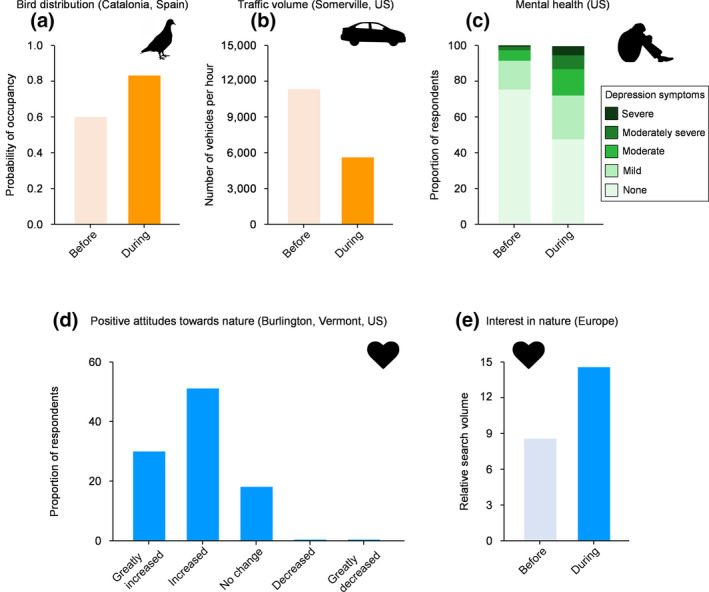FIGURE 3.

Empirical evidence suggesting the presence of the three pathways (a, b: changes in opportunity, c: changes in capability, d, e: changes in motivation) through which the pandemic affects human‐nature interactions (see also Figure 2). (a) Probability of occupancy of Rock pigeon Columba livia in urban areas before and during COVID‐19 lockdown in Catalonia, Spain (Derks et al. 2020); (b) Diurnal traffic volume (vehicles/h) on weekdays on urban roadways between March and May before (in 2018) and during the pandemic in Somerville, the U.S. (we used data at 1 pm; Hudda et al., 2020); (c) Prevalence of depression symptoms in US adults before and during the pandemic (depression symptoms were assessed using the Patient Health Questionnaire; Ettman et al., 2020); (d) Perceived changes in personal importance of being able to access natural environments during the pandemic compared to prior to it in Burlington, Vermont, US (Grima et al., 2020); and (e) Relative search volume for nature‐related topics (e.g. forest, bird, nature, biodiversity) on Google before and during the pandemic in 20 European countries (Rousseau & Deschacht, 2020)
